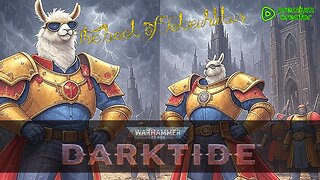Premium Only Content

Free Stock Market Course Part 14: Cryptocurrencies
Free File downloads
Course notes, Audio files, Assessments, Transcript files, and Course Outline: https://spxinvestingblog.com/downloads/
My Exclusive Free Workshop: The Four P's of Building a Successful Investing Program → https://spxinvesting.mailchimpsites.com
Blog: https://spxinvestingblog.com
Facebook Group: https://www.facebook.com/groups/433843641082343
Link: https://blockgeeks.com/guides/what-is-blockchain-technology/
Chapters:
00:00 The Creation of Bitcoin
03:14 A Brief History of Bitcoin
04:47 Characteristics of Bitcoin
07:09 Security
11:14 Miners
13:05 How Mining Works
15:02 Number of Bitcoins
16:16 Blockchain
17:42 Blockchain Simplified
18:22 What is a Block?
20:26 How Blockchain Works
20:10 How to Acquire Bitcoins
24:10 Bitcoin Risks
27:24 Bitcoin’s Price
30:29 Power Hungry
32:20 Bitcoin Charts
46:13 Bitcoin Potential
Module 3 Section 6
The Creation of Bitcoin
Bitcoin is a digital currency created in 2009.
Satoshi Nakamoto. A person or a group.
Bitcoin was created to offer:
Low transaction fees
Decentralization
Access to “unbanked” parts of the world.
Security and convenience
Removal of the middleman
A Brief History of Bitcoin
Characteristics of Bitcoin
Digital rather than physical
Not issued or backed by any bank or government.
Made secure by using Blockchain, an online public ledger.
Creating opportunities for Altcoins.
Security
Public Key:
Private Key:
Both are needed.
Miners
Miners maintain the decentralized ledger called Blockchain
Provides credibility and security
Miners paid in bitcoins
Peer-to-peer technology. No central location.
Declining rate.
Miners work hard and fast.
Bitcoin mining releases bitcoins into circulation.
How Mining Works
Difficult algorithms discover a new block
Added to the blockchain.
Miners receive payment.
In 2009, the block reward was 50 new bitcoins.
This number decreases every four years.
As of May 2020, the reward was halved to 6.25 bitcoins.
Mining becomes more difficult. Ultra-powerful computers.
Number of Bitcoins
21 million.
Subdivided into units called a Satoshi.
Even smaller rates are possible by subdividing bit coin values even more.
Blockchain
Blockchain is the underlying technology
Public ledger of all cryptocurrency transactions
Digitized
Decentralized
The ledger is constantly growing as new blocks of transactions are recorded and added.
New blocks are added in chronological order.
Each computer connected to the network (node) gets a copy of the blockchain, which is downloaded automatically.
Blockchain Simplified
Blockchain is a “digital ledger” stored in a distributed network.
What is a Block?
A block records recent transactions.
Once a block is completed it becomes part of a permanent database.
Then, a new block is generated.
The blocks connect like links in a chain.
Every block contains a hash, or information about, the previous block.
The entire blockchain, or “set of blocks”, has information about users including balances and transactions.
Transactions cannot be deleted.
The data can be distributed, but not copied.
As the blockchain grows larger and larger, this can create issues of storage and synchronization.
That means each individual piece of data can only have one owner.
How to Acquire Bitcoins
Receiving Payments:
An Alternative to cash, credit cards or debit cards.
Earnings:
Working for a Cryptocurrency company that makes payments in bitcoins.
Interest payments:
Possessed bitcoins can be loaned out. Interest can be charged as a fee that is repaid in bitcoins.
Gambling
Some casinos accept and offer bitcoins as currency.
Setting up a Digital Wallet
Information stored in the Blockchain
Records of every transaction ever executed.
Blockchain.info provides access to the entire Bitcoin blockchain.
Bitcoin Risks
Regulatory Risks
Security Risks
Bitcoin transactions are permanent and irreversible
Insurance Risks
Fraud Risks
Market Risks
Obsolescence
Tax Risks
Bitcoin’s Price
In 2017, a Bitcoin rose from about $1,000 in January to a high of just under $19,000 in December of 2017.
Bitcoin has turned into a mania as individuals seek to make lots of “easy” money quickly.
As of July 2021, Bitcoin has fallen to a price of just over $30,000 after climbing to over $63,000 in spring 2021. Price is determined by Supply and Demand.
Price is also dependent on the size of its mining network.
The larger the network is, the more difficult and costly it is to produce new bitcoins.
The price of a bitcoin must rise as the costs of production increase.
Mining power more than tripled in 2017.
Power Hungry
Bitcoin Potential
Bitcoin supporters believe that digital currency is the future.
It has the potential of facilitating a much faster, no-fee payment system for worldwide transactions.
The foundation being developed can be used for other industries such as:
Smart Contracts
Copyrights and artistic authentication
Purchases
Vehicle registrations
Weapons registration
Medical records
Voting
The goal is to “remove” the middlemen.
-
 36:23
36:23
The SPX Investing Program
22 hours agoInterMarket Analysis Update for Monday July 28, 2025
18 -
 21:15
21:15
The SPX Investing Program
3 years ago $0.01 earnedFree Stock Market Course. Part 6: ETFs
330 -
 19:11
19:11
The SPX Investing Program
3 years agoFree Stock Market Course Part 11: Liquidity
189 -
 12:55
12:55
The SPX Investing Program
3 years agoFree Stock Market Course Part 13: Penny Stocks
149 -
 11:09
11:09
The SPX Investing Program
3 years agoFree Stock Market Course Part 12: Bid Ask Prices
137 -
 LIVE
LIVE
Barry Cunningham
4 hours agoPRESIDENT TRUMP HAS DESTROYED WOKEISM! DEMOCRAT PARTY IN SHAMBLES!
6,591 watching -
 LIVE
LIVE
The Pascal Show
2 hours ago $0.06 earnedBREAKING! Active Shooter In Midtown Manhattan NYC Multiple People Shot!
114 watching -
 10:25
10:25
MattMorseTV
7 hours ago $4.46 earnedVance just DROPPED a NUKE.
6.58K25 -
 LIVE
LIVE
Jokeuhl Gaming and Chat
4 hours agoDARKTIDE - Warhammer 40k w/ Nubes and AoA
60 watching -
 LIVE
LIVE
Shoriantrax
1 hour agoLIVE: Hardcore Chaos in Tarkov – Loot, Die, Repeat!
16 watching